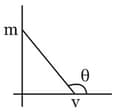Linear and Longitudinal Magnification
Linear and Longitudinal Magnification: Overview
This topic covers concepts such as Magnification in Convex Lens, Magnification in Concave Lens, Longitudinal Magnification in Convex Lens, and Longitudinal Magnification in Concave Lens.
Important Questions on Linear and Longitudinal Magnification
A converging lens of focal length 20 cm and diameter 5 cm is cut along the line AB. The part of the lens shown shaded in the diagram is now used to form an image of a point P placed 30 cm away from it on the line XY. Which is perpendicular to the plane of the lens. The image of P will be formed.

What is concave lens in physics?
Why is the magnification of a concave lens always less than 1?
What is the magnification of concave lens and convex lens?
Is longitudinal magnification negative?
What is the magnification of concave?
HOW IS lens magnification calculated?
How do you find the linear magnification of a convex lens?
Magnification of a concave lens is
A lens of focal length ‘f’ is placed in between an object and screen at a distance ‘D’. The lens forms two real images of object on the screen for two of its different positions, a distance ‘x’ apart. The two real images have magnifications m1 and m2 respectively (m1 > m2).
A convex lens of focal length is placed some where in between an object and a screen. The distance between object and screen is . If numerical value of magnification produced by lens is , focal length of lens is
A convex lens of focal length forms a real, inverted image twice in size of the object. The distance of the object form the lens is
A square card of side length is being seen through a magnifying lens of focal length . The card is placed at a distance of from the lens. The apparent area of the card through the lens is
A convex lens of focal length 30 cm produces 5 times magnified real image of an object. What is the object distance?
Figure shows variation of magnification m (produced by a thin convex lens) and distance v of image from pole of lens. Which of the following statements is incorrect

A boy is trying to start a fire by focussing sunlight on a piece of paper using an equiconvex lens of focal length 10 cm. The diameter of the sun is 1.39 × 109 m and its mean distance from the earth is 1.5 × 1011 m. What is the diameter of the sun's image on the paper ?
The size of the image of an object, which is at infinity, as formed by a convex lens of focal length is . If a concave lens of focal length is placed between the convex lens and image at a distance of from the convex lens, calculate the new size of the image.
